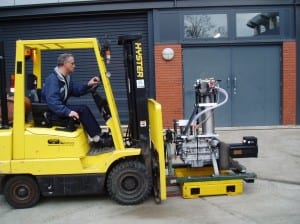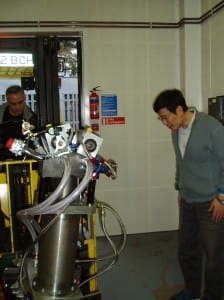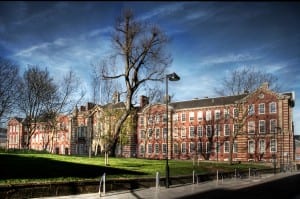
The idea to develop a free piston engine has a long history, mainly focusing on two-stroke designs with a combustion chamber at each end of a linear motor generator. the main idea is to remove the physical constraints imposed by conventional crankshaft based engines, reduce the mechanical losses to improve the engine efficiency, and to introduce elements of piston trajectory control to allow advanced combustion control.
As if that wasn’t challenging enough, Jamie Turner of Lotus Engineering and I had the idea of pushing the envelope even further, to create a single combustion chamber, four-stroke design. This developed from the fact that two-ended designs are generally constrained to operate via an oscillating principle akin to simple harmonic motion for increase efficiency. In our view, we wanted to push the technology of the possible even further, and design what was originally called the Lotus Active Crank Train (ACT) and eventually became the Zero Constraint Free Piston Energy Converter.
We originally applied to the EPSRC ‘Adventure Fund’, but the application was rejected on the grounds that the proposal was ‘too adventurous’! The EPSRC however invited us to re-submit, and the project became…
EPSRC Grant: GR/S97507/01 ‘Zero Constraint Free Piston Energy Converter‘
PI: Paul Stewart. Co-Investigator: D. Howe. (University of Sheffield) Collaborating University: Dr Rui Chen, Dept. Aeronautical and Automotive Engineering, University of Loughborough UK. Collaborating Company: Lotus Engineering, Consortium Project Manager: Paul Stewart.
P. Stewart: £326,00, R. Chen £260,000, Lotus Engineering Contribution: £330,000

I was a Junior Lecturer at the time in the Electrical Machines and Drives Group at Sheffield University. I needed an engines/combustion collaborator, and since I had worked at Loughborough as a Post-doc, searched their web-site and approached Dr Rui Chen who was then also a Junior Lecturer (now Professor of Low Carbon Power Engineering) in the Department of Aeronautical and Automotive Engineering at the University of Loughborough. This was the start of a research relationship and friendship which lasts to this day.
In order to ‘de-risk’ the project, the free-piston was originally tethered to the crankshaft of a General Motors 1.8l engine so that we could conduct our initial development in relative safety. The engine as delivered from lotus is pictured above, the free-piston part (nick named the ‘rocket launcher’) is the tube and cylinder head sticking up from the GM crankcase. In the next part of the story, we get it running, and discover we can look at some hitherto unattainable fundamental aspects of combustion.

